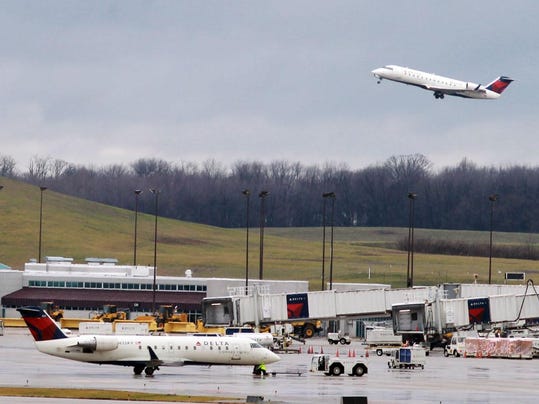
What the chamber is proposing isn't unique. "County Executive Davis, the mayor, the chamber and various other stakeholders have come together to formulate a potential financial solution for this problem that will be multifaceted and could include government contribution, private sector contribution, and grant funding options that may be available from the state and federal governments," Sinnott said. Is the county willing to help fund an incentive plan? "A region of this size should have air service that makes it convenient for both business and leisure travelers to get to into Erie, or out to their destinations, conveniently and at an affordable cost," Sinnott said. More: Erie-Florida air service? A federal grant could make that happen as early as next yearĮrie County government hasn't promised a particular contribution, but Joe Sinnott, director of economic development for the county, said Erie County Executive Brenton Davis has asked him to make restoring air service a priority. He's not sure yet how much VisitErie could offer or what would make sense. Oliver said he thinks it would be appropriate for VisitErie to contribute financially and has told Grunke so. John Oliver, CEO of VisitErie, Erie County's tourism promotion agency, is among those to offer his support.Īlthough an overwhelming share of Erie tourists arrive by car, Oliver said the airport is important to the region's convention business and visitors who come to town for events sponsored by the Erie Sports Commission. Grunke said last week that no one has committed to a specific amount of money, but that there has been widespread support for the idea. The Authority, which has a $10 million restricted reserve, plans to use a portion of those funds for two years to attract increased service, he said. Rouch said the Erie Regional Airport Authority also has money available to help fund temporary deficits until enplanements rise. That fund isn't the only source of income that the chamber envisions as it begins to make the case for expanded air service, including an effort to attract a low-cost carrier that could potentially serve Erie with twice-weekly flights to Florida.


The Fly Erie Fund would be administered by the Erie Regional Chamber and Growth Partnership, which would provide the legal structure to receive public and private funding. More: United Airlines will end service at Erie International Airport beginning in June Grunke said the chamber's proposal calls for a three-year commitment to raise $1 million a year, splitting the expense between the public and private sectors. In a recent meeting with members of the business community, the chamber proposed establishing a $1 million fund that could be used each year to help airlines bridge the gap between the number of tickets they expect they can sell on flights departing Erie and the amount they need to sell in order to be profitable. James Grunke, CEO of the chamber, believes financial incentives are likely the best way to encourage airlines to add service here. "Historically, when an air service exceeds 80% load factors, the air carrier is adding routes, frequency and larger airplanes into the market," he said. More: Airport is partnering with Erie community to build air service, airport director saysĮrie's flights operated at close to a 90% load factor, compared to a national average of about 80%, Rouch said in recent presentation. Under normal circumstances, Derek Martin, executive director of the airport, would have had no reason to be concerned about United ending its flights to Chicago, said Jake Rouch, vice president of economic development for the chamber.

Shortages of pilots, planes and mechanics have airlines looking to fly only the most profitable routes. More: Lack of air service is holding Erie back. According to the Erie chamber, 300 airports have lost some level of commercial service since the beginning of the pandemic and 14 airports have lost all commercial service. The trend does not favor Erie and other non-hub airports. Leaders of the Erie Regional Chamber and Growth Partnership are hoping that a partnership between local government and the business community and an initial investment of $1 million could prevent further service declines.


 0 kommentar(er)
0 kommentar(er)
